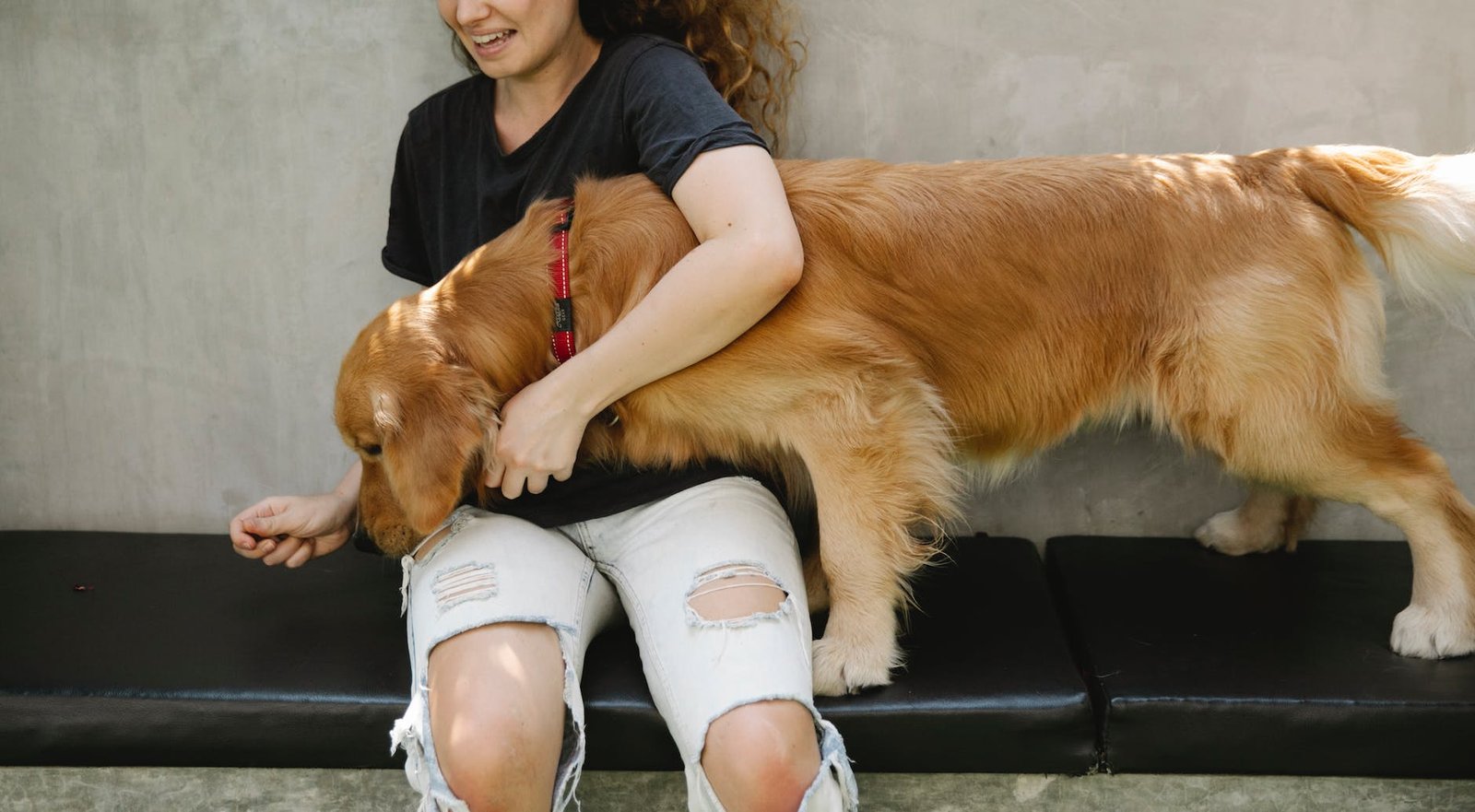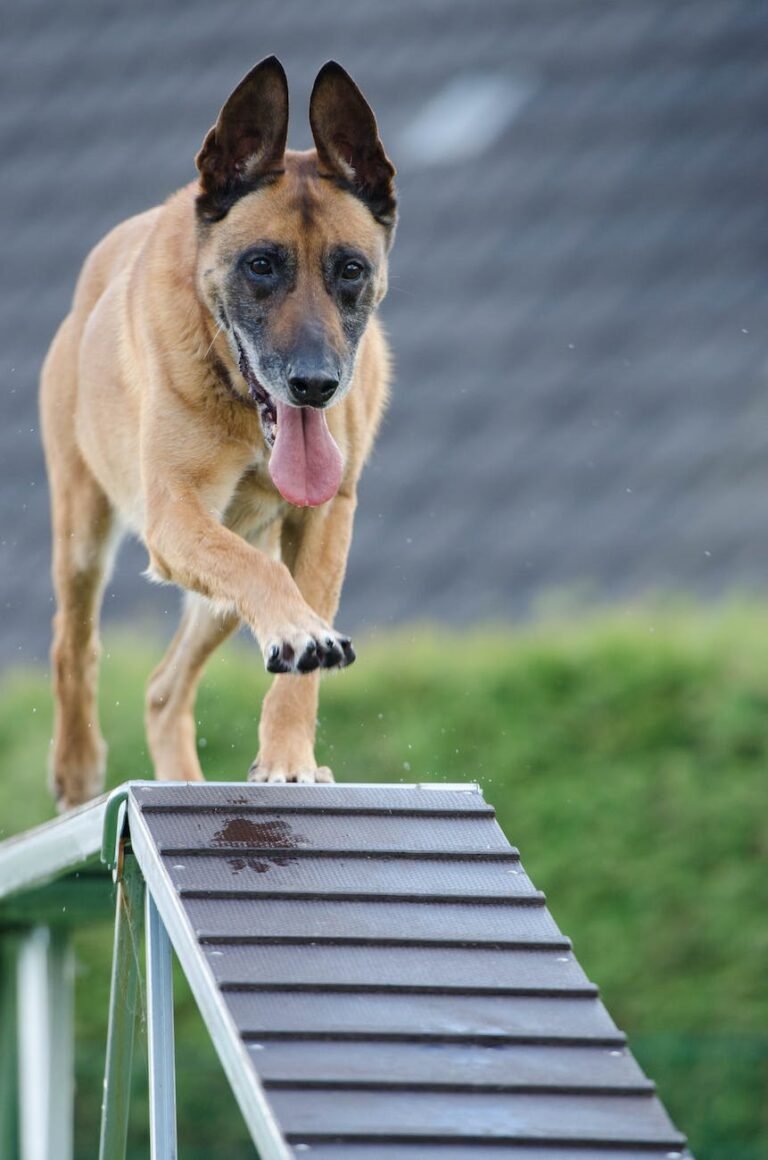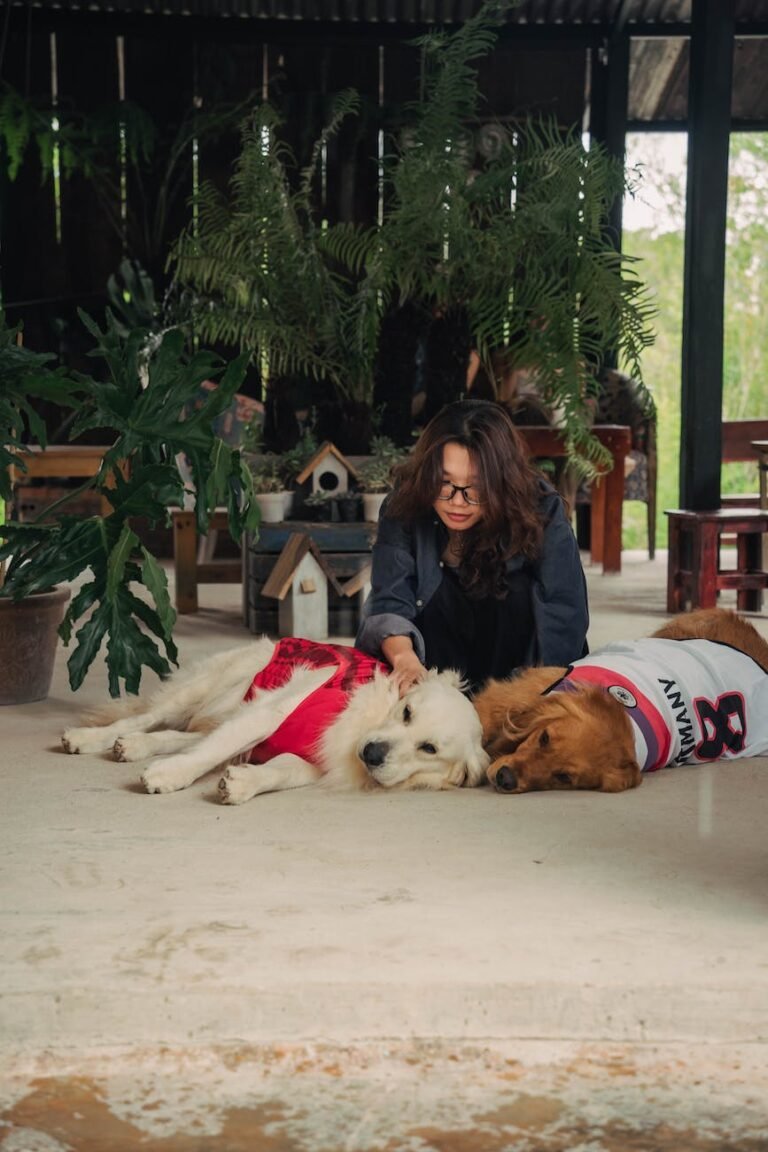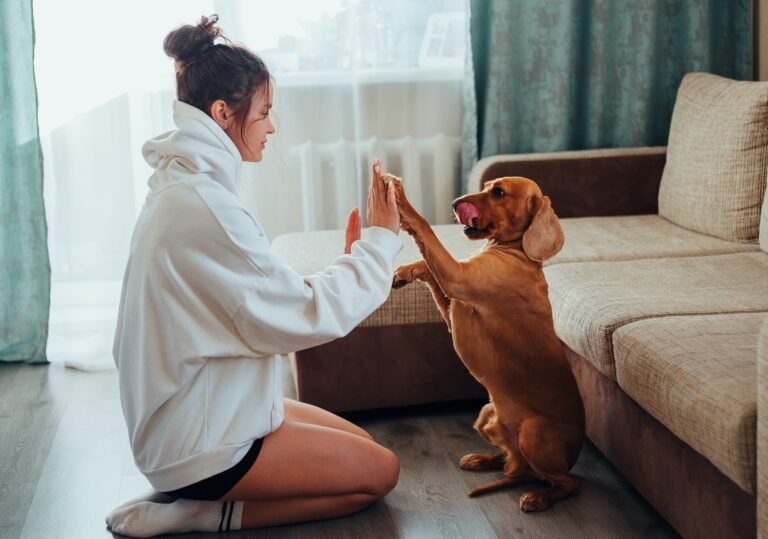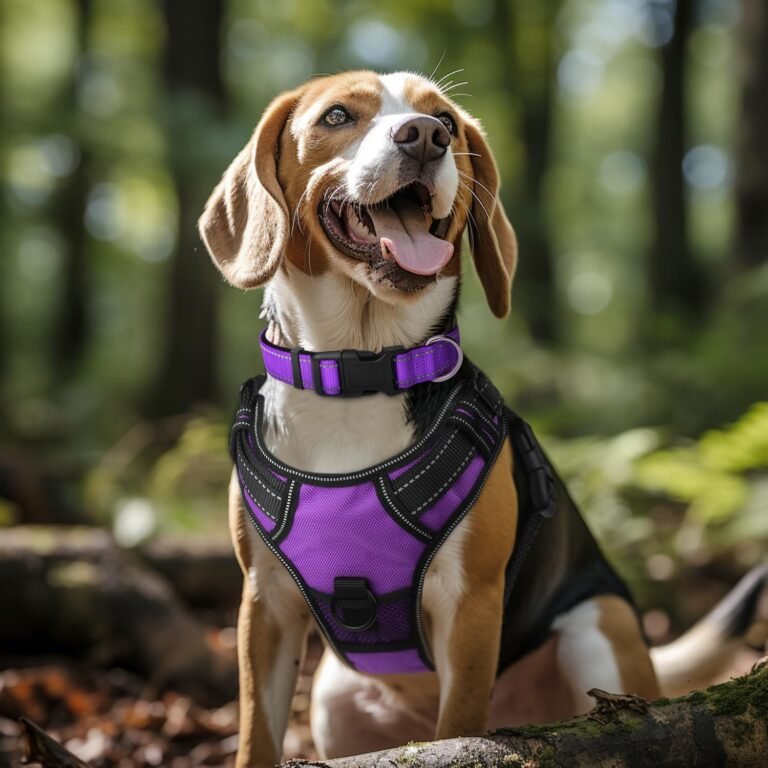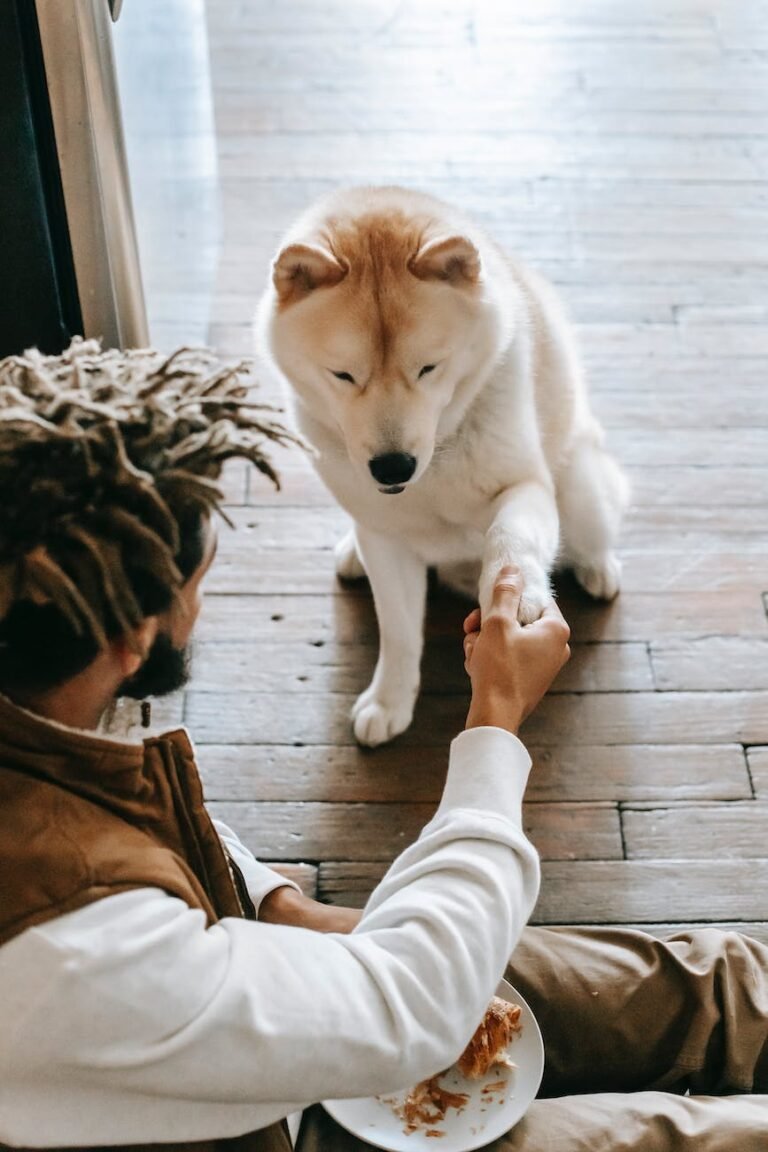The Key to Happy Tails: Unlocking Success with Positive Reinforcement Dog Training
Introduction to Positive Reinforcement Dog Training
When it comes to training your furry friend, positive reinforcement is a highly effective and humane approach. This training method focuses on rewarding desired behaviors rather than punishing unwanted ones. By using positive reinforcement, you can create a happy and harmonious bond with your dog. Let’s explore what positive reinforcement is and why it is the preferred training technique for many dog owners.
What is Positive Reinforcement?
Positive reinforcement involves rewarding your dog for exhibiting behaviors that you want to encourage. This can be done by offering treats, verbal praise, or playtime whenever your dog performs a desired action. The idea is to associate the behavior with a positive outcome, making your dog more likely to repeat it in the future.
For example, if you’re teaching your dog to sit, you would reward them with a treat and praise every time they successfully sit on command. Over time, your dog will learn that sitting when asked leads to positive consequences, reinforcing the desired behavior.
The use of positive reinforcement avoids the use of fear, punishment, or physical force, which can cause stress and damage the trust between you and your dog. Instead, it focuses on creating a positive and rewarding learning experience.
Why Choose Positive Reinforcement Training?
Positive reinforcement training offers several benefits for both you and your dog. Here are a few reasons why it’s a popular choice among dog owners:
-
Promotes a Strong Bond: Positive reinforcement training helps strengthen the bond between you and your dog. By using rewards and positive reinforcement, you build trust and create a positive association with training sessions.
-
Encourages Willing Participation: Dogs are more likely to participate willingly in training when they associate it with positive experiences. With positive reinforcement, your dog becomes motivated and eager to learn new behaviors and tricks.
-
Long-lasting Results: Positive reinforcement training focuses on teaching your dog the desired behaviors rather than suppressing unwanted ones. This leads to long-lasting results as your dog learns to make positive choices and engages in behaviors that are both enjoyable and beneficial.
By choosing positive reinforcement training, you can create a positive and enjoyable training experience for both you and your four-legged companion. Ready to explore different training techniques that utilize positive reinforcement? Check out our articles on clicker training for dogs and fun tricks to teach your dog for more exciting and effective training ideas!
The Science Behind Positive Reinforcement
To understand the effectiveness of positive reinforcement dog training, it’s important to explore the underlying science behind this training method. Two key principles play a crucial role in positive reinforcement training: operant conditioning and the use of rewards for motivation.
Operant Conditioning
Operant conditioning is a fundamental concept in behavioral psychology that forms the basis of positive reinforcement dog training. It involves associating a specific behavior with a consequence, either reinforcing or discouraging the behavior.
In positive reinforcement training, the focus is on reinforcing desired behaviors. When your dog exhibits the desired behavior, such as sitting on command or fetching an object, you reward them with a treat, praise, or play. This positive consequence strengthens the association between the behavior and the reward, making it more likely that your dog will repeat the behavior in the future.
By consistently rewarding desired behaviors and ignoring or redirecting undesired behaviors, you can shape your dog’s behavior effectively and create a positive learning environment.
Rewards and Motivation
Rewards serve as powerful motivators in positive reinforcement dog training. Dogs, like humans, are motivated by the desire to obtain rewards and avoid negative consequences. By using rewards strategically, you can motivate your dog to learn and engage in desired behaviors.
When choosing rewards, it’s important to understand what motivates your dog. While treats are often a popular choice, rewards can also include verbal praise, petting, playtime, or access to their favorite toys or activities. The key is to find what your dog finds most rewarding and use it consistently during training sessions.
Using a variety of rewards can help maintain your dog’s interest and keep training sessions enjoyable and engaging. For example, you can use a clicker, a small handheld device that emits a distinct sound, to mark the desired behavior and follow it up with a treat. Clicker training is a popular technique in positive reinforcement training. To learn more about clicker training, visit our article on clicker training for dogs.
Understanding the science behind positive reinforcement training can help you appreciate the effectiveness of this method. By utilizing operant conditioning principles and leveraging rewards as motivation, you can create a positive learning experience for your dog. This not only strengthens the bond between you and your furry friend but also paves the way for successful training outcomes.
Basic Principles of Positive Reinforcement Training
Positive reinforcement training is a highly effective and humane approach to dog training. To maximize the benefits of this training method, it’s important to understand and apply the basic principles of positive reinforcement. These principles include timing and consistency, as well as using rewards effectively.
Timing and Consistency
Timing is crucial in positive reinforcement training. Dogs learn best when the reward is given immediately after they exhibit the desired behavior. This immediate reinforcement helps them associate the action with the reward, reinforcing the behavior you want to encourage.
Consistency is equally important. Dogs thrive on routine and predictability. By providing consistent feedback and rewards, you establish clear expectations and make it easier for your dog to understand what you want from them. Consistency also helps eliminate confusion and prevents your dog from becoming frustrated or discouraged.
Using Rewards Effectively
Rewards are the foundation of positive reinforcement training. They serve as motivators and reinforce your dog’s desired behavior. It’s important to choose rewards that are highly enticing to your dog, such as small treats, favorite toys, or verbal praise. The more rewarding the experience, the more motivated your dog will be to repeat the behavior.
To use rewards effectively, consider the following tips:
-
Use high-value rewards: Use rewards that your dog finds extremely enticing. This could be a special treat reserved only for training sessions or a favorite toy.
-
Vary the rewards: While consistency is important, it’s also beneficial to occasionally vary the rewards. This helps keep your dog engaged and excited during training sessions.
-
Use verbal praise: Verbal praise, such as a cheerful “good job” or “yes,” can be a powerful reward for many dogs. Combine it with physical affection, such as petting or gentle scratches, to reinforce positive behavior.
-
Gradually reduce the use of treats: As your dog becomes more proficient at the desired behavior, gradually reduce the frequency of treat rewards. Instead, rely more on verbal praise and other non-food rewards to reinforce the behavior.
Remember, the goal of positive reinforcement training is to create a positive and enjoyable experience for your dog. By effectively timing your rewards and using enticing incentives, you can strengthen the bond with your furry friend while achieving long-lasting behavior modification.
For more training techniques and tips, check out our article on clicker training for dogs and explore fun tricks to teach your dog for some easy and entertaining tricks to teach your canine companion. If you’re new to dog training, our article on dog training for beginners offers helpful insights to get you started.
Training Techniques for Positive Reinforcement
When it comes to positive reinforcement dog training, there are several effective techniques you can use to teach your furry friend new tricks. These techniques focus on rewarding desired behaviors and creating a positive learning experience for your dog. In this section, we will explore three popular training techniques: clicker training, marker words, and luring and shaping.
Clicker Training
Clicker training is a popular method that uses a small handheld device called a clicker to mark and reinforce desired behaviors. The clicker produces a distinctive sound that serves as an immediate marker to indicate to your dog that they have done something right. This technique is particularly effective for teaching dogs new behaviors and tricks.
To use clicker training, you first need to pair the sound of the clicker with a reward. Click the device and immediately follow it with a treat or praise. Repeat this process several times, ensuring that your dog associates the click with something positive. Once your dog understands the connection between the click and the reward, you can start using the clicker to mark desired behaviors and reinforce them. For more information on clicker training, check out our article on clicker training for dogs.
Marker Words
Similar to clicker training, marker words are verbal cues that serve as immediate markers for your dog’s correct behavior. Instead of using a clicker, you can use words like “yes” or “good” to indicate to your dog that they have done something right. Marker words are convenient because they are always with you and can be used in any situation.
To use marker words effectively, choose a word and consistently pair it with a reward. Say the word immediately after your dog performs the desired behavior and follow it with a treat or praise. Over time, your dog will learn to associate the marker word with positive reinforcement. Marker words can be a great alternative to clicker training, especially if you prefer not to use a clicker.
Luring and Shaping
Luring and shaping are techniques that involve guiding your dog’s behavior using rewards. Luring uses treats or toys to entice your dog into performing the desired behavior. For example, you can use a treat to lead your dog into a sitting position. Once your dog has successfully performed the behavior, reward them with the treat and praise. This technique is particularly useful for teaching basic commands and simple tricks.
Shaping, on the other hand, involves breaking down a complex behavior into smaller steps and rewarding your dog for each incremental progress. For example, if you want to teach your dog to roll over, you can reward them for lying down, then for turning their head, and gradually shape the behavior until they complete the full roll over. Shaping requires patience and consistency, but it can be a rewarding and effective way to teach more complex tricks.
By using these training techniques, you can create a positive and engaging learning experience for your dog. Remember to be patient, consistent, and always reward your dog for their efforts. For more ideas on fun tricks to teach your dog, check out our article on fun tricks to teach your dog. Happy training!
Benefits of Positive Reinforcement Training
Positive reinforcement training is not only effective in teaching your dog new behaviors, but it also offers numerous benefits that can enhance your relationship with your furry friend. Let’s explore some of the key advantages of using positive reinforcement techniques.
Strengthening the Bond with Your Dog
Positive reinforcement training helps to create a strong bond between you and your dog. By using rewards and praise to reinforce desired behaviors, you establish a positive association with training sessions. This positive association builds trust, respect, and mutual understanding, strengthening the bond between you and your canine companion.
When your dog realizes that good behavior leads to rewards and attention from you, they become more motivated to engage in training and please you. This mutual cooperation and shared positive experiences can deepen the connection you have with your dog, making training sessions enjoyable for both of you.
Building Confidence
Positive reinforcement training plays a significant role in building your dog’s confidence. When your dog successfully learns and performs desired behaviors through positive reinforcement, they gain a sense of accomplishment and self-assurance. The consistent use of rewards and praise boosts their confidence, encouraging them to continue learning and trying new things.
As your dog becomes more confident in their abilities, they are likely to exhibit behavior that is calm, relaxed, and well-mannered. Positive reinforcement training provides a nurturing environment that fosters positive behaviors and helps your dog develop into a well-rounded and confident companion.
Long-term Behavior Modification
One of the greatest advantages of positive reinforcement training is its long-term effectiveness in modifying your dog’s behavior. Unlike punishment-based methods that may suppress unwanted behaviors temporarily, positive reinforcement focuses on teaching your dog what you want them to do rather than focusing on what you don’t want.
By consistently rewarding and reinforcing desired behaviors, you encourage your dog to repeat these behaviors in the future. Over time, this repetition strengthens the neural pathways associated with positive behaviors, making them more likely to occur naturally. With patience and consistency, positive reinforcement training can have a lasting impact on your dog’s behavior, creating positive habits that become ingrained in their daily routine.
When implementing positive reinforcement training techniques, it’s essential to remember the principles of timing and consistency. Visit our article on dog training for beginners for more information on how to effectively use positive reinforcement in your training sessions.
By utilizing positive reinforcement techniques, you not only teach your dog new commands and tricks but also foster a deeper connection, build their confidence, and promote long-term behavior modification. Remember to set realistic goals, be patient, and seek professional guidance when needed. With positive reinforcement training, you can unlock your dog’s potential and create a harmonious and fulfilling relationship.
Tips for Successful Positive Reinforcement Training
When engaging in positive reinforcement training with your dog, there are several key tips to keep in mind to ensure successful and effective training sessions.
Patience and Persistence
Patience is a virtue when it comes to positive reinforcement training. Remember that learning takes time, and each dog progresses at their own pace. Stay calm, patient, and consistent throughout the training process. Celebrate even the smallest successes and be prepared to repeat exercises until your dog fully understands the desired behavior. It’s essential to maintain a positive and encouraging attitude to keep both you and your furry friend motivated.
Setting Realistic Goals
Setting realistic goals is crucial in positive reinforcement training. Start with simple commands or behaviors that are easily achievable for your dog. By breaking down the training into small steps, you can gradually build upon each success. This approach helps your dog stay motivated and prevents frustration for both of you. As your dog masters the basics, you can gradually introduce more challenging commands or tricks. Remember, the journey is just as rewarding as the destination, so enjoy the process of training your dog and celebrate their progress along the way.
Seeking Professional Guidance
While positive reinforcement training can be done at home, seeking professional guidance can greatly enhance your training experience. Professional dog trainers have a wealth of knowledge and expertise to help you navigate any challenges you may encounter. They can provide personalized advice and tailor training techniques to your dog’s specific needs. A professional trainer can also guide you in refining your training skills and help you and your dog achieve the best possible results. If you’re just starting out or facing difficulties, consider consulting a professional dog trainer to ensure you and your dog are on the right track.
By incorporating these tips into your positive reinforcement training routine, you can create a positive and effective learning environment for your dog. Remember, patience and persistence are key, and setting realistic goals will help you and your furry companion succeed. Don’t hesitate to seek professional guidance when needed, as it can make a significant difference in your training journey. Enjoy the process, have fun, and strengthen the bond between you and your beloved pup.
For more information on specific training techniques and fun tricks to teach your dog, check out our articles on clicker training for dogs and easy dog tricks to teach. And if you’re new to dog training, our article on dog training for beginners provides a comprehensive overview to get you started. Happy training!

